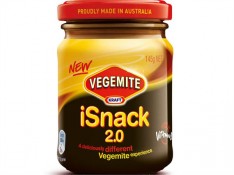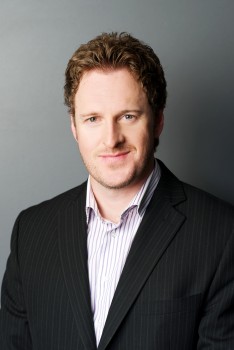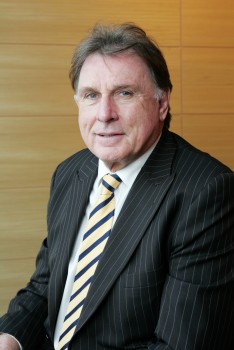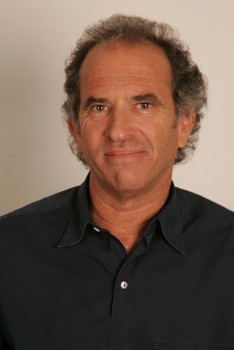In the eye of the storm
A bad day in the media, marketing and entertainment industry can have far-reaching and disastrous consequences for a company, brand or personal reputation, as Marcus Casey discovered when he asked executives from across the industry how they survived the worst day of their professional lives.
 It was the V word which caused a major stir on talkback radio last year and gave women’s healthcare brand Carefree a huge all-publicity-is-good-publicity push. But it was extremely touchy for owner Johnson and Johnson.
It was the V word which caused a major stir on talkback radio last year and gave women’s healthcare brand Carefree a huge all-publicity-is-good-publicity push. But it was extremely touchy for owner Johnson and Johnson.
The point of contention was a 30-second spot created by agency Lowe303 which featured a discreetly naked young woman talking about secret women’s business – specifically vaginal discharge – to promote its Acti-Fresh liners.
While it was an admirably refreshing and open campaign, there was a backlash which caused headaches for the company.
“It appalled middle-aged conservative men in particular,” says Lowe303’s Nick Cleaver. “There was a reaction by radio hosts and others who believed the word ‘vagina’ should not be heard in an ad, or inter-menstrual discharges. And the fact the woman in the ad was naked just added to it.”
While it may have seemed a storm in a teacup, it’s an issue that corporations such as Carefree owner Johnson and Johnson take very seriously in their day-to-day protection of a brand. But Carefree had prepared for this and they had a plan. The brand lined up independent women’s health issue spokeswoman Debbie Selikman of the Beauty Heaven website to take up the fight.
When the outrage erupted, Selikman was out there defending Carefree. And she was still at it six weeks later.
It doesn’t matter what industry you work in, everyone can relate to having a bad day that has catastrophic, ongoing consequences.
What makes working in the communications business all the more challenging is that often, these issues play out in the public eye.
Sydney PR maestro Sue Cato is a woman who individuals and corporations call when trouble happens. While she won’t talk about individual cases, she has managed situations such as sexual harassment claims against former David Jones CEO Mark McInnes, who was forced to resign after a 25-year-old marketing department employee at the company went public with allegations of inappropriate behaviour in 2010.
Cato also stepped in to handle the firestorm which erupted around acclaimed photographer Bill Henson in 2008 over claims an exhibition he was holding amounted to child pornography.
“Crises come in all sorts of weird and wonderful ways and of all types and sizes,” she says. “If you are a company like BP, you will be ready for an oil leak or major refinery fire. You need to have a set of skills in place to be able to work under the pump because your business is going to be operating in a much different way – but it still has to operate.
“Many companies are unprepared for random, unexpected crises. It could be a death in the workplace, a staff member behaving unbelievably badly, or if you’re a NRL or AFL club, it could be a player in terrible trouble behaving really badly.
“That’s when we get called in. It’s a headache versus a brain tumour. For a headache you treat it with aspirin. When it’s a tumour, you call in an expert.”
Cato says a strategy has to be established quickly. “You have to map out a plan,” she says. “The first thing you do is sit down and find out every bit of truth, the whole truth and nothing but the truth from those concerned because you’re going to be responding to the media, and if you unintentionally mislead or lie to them, everything will just get worse. You immediately get lawyers involved.
“You identify all the key players involved and make sure they’re contactable 24 hours a day to respond to media enquiries. It’s no good telling a journalist that you can’t contact the person needed, that the information might be an hour away – it has to be straight away, otherwise you lose control.”
Cato cites the case of BP executive Tony Hayward going sailing while an oil rig continued to blaze in the Gulf Of Mexico in 2010 as an example. “How stupid was that?” she says.
But not every organisation has Cato on speed dial and not every crisis is a public one. Navigating the ship from the eye of the storm is different in every situation. Encore spoke to three executives from different fields who found themselves in hot water. From a miscast actor who took a promising TV series off course, to an innocent crowdsource naming exercise gone wrong and off-the-cuff remarks made by a high profile radio host – the executives share their stories in their own words.
VEGEMITE’S SHORT-LIVED NEW NAME
 Simon Talbot is the corporate spokesman for Kraft, which disastrously named a new version of Vegemite iSnack 2.0 after a public competition. So bad was the public and media reaction that the Harvard Business Review has just made it a case study in how not to manage a brand.
Simon Talbot is the corporate spokesman for Kraft, which disastrously named a new version of Vegemite iSnack 2.0 after a public competition. So bad was the public and media reaction that the Harvard Business Review has just made it a case study in how not to manage a brand.
“We announced the name at half time in the AFL grand final in 2009 with a man from Perth who won a cash prize. The reaction was terrible – people thought it was a joke, and that we would announce a new name the next day. It was a much bigger storm for Kraft than people realised at the time, because we were acquiring Cadbury and it was a hostile takeover. There was criticism coming in that we didn’t know how to manage iconic brands.
The Australian board was being scrutinised both here and overseas by the media, shareholders and retailers. What happened was we got the name wrong, but the innovation right. We had young marketers on the team, and what we have learnt is that we must continue to innovate, but have a much stronger structure in place.
But the board made the decision. I won’t disclose my thoughts at the time, but it was a very intense debate, and we didn’t have a CEO at the time.
When the storm erupted there was a naivety that it would pass. But it didn’t. It kept getting bigger and bigger, and it evolved from a brand issue into a corporate issue, and we had to make some very serious corporate decisions to get ourselves off the front pages.
There were three schools of thought – change the name, ride it out, or let the people vote again for a new name.
After the announcement at the AFL grand final the Twittersphere erupted, and by Sunday lunchtime we were trending worldwide, and stayed that way for 48 hours. And it wasn’t just a storm, it was pure anger.
We had to get the man who came up with the name and his family out of Perth. We sent them to Bali to protect them because he was being subject to absolutely vicious vitriol on social media, and threats were being made to his safety. And he was just one of our consumers who came up with the name.
We were in lockdown and the media just kept at the story.
So we had to hand it back over to the public to find a new name. We developed a web page in record time and got 50,000 customer votes in five days. They chose the name Cheesy Bites.
The great irony was that we’d sold three million jars, which is the best trial rate for a consumer product in Australian history, beating Coke Zero.
And when we announced the name change, people were out there buying iSnack 2.0 because it was to become a memorabilia item.
So many people thought it was all a stunt from the beginning, the most masterfully orchestrated PR stunt in all of history.
But it wasn’t. It was a mistake, and showed terrible sloppiness in our consumer testing.”
THE 2GB DEBACLE
 Russell Tate is chairman of the Macquarie Radio Network. Late last year star announcer Alan Jones was revealed to have made terrible comments about the death of prime minister Julia Gillard’s father at a Young Liberals function. Jones said that Gillard’s father had “died of shame”. Fury soon erupted, and advertisers abandoned Jones’ radio show after being bombarded in a well-executed social media campaign. 2GB made the decision to pull all advertising from Jones’ show for a week.
Russell Tate is chairman of the Macquarie Radio Network. Late last year star announcer Alan Jones was revealed to have made terrible comments about the death of prime minister Julia Gillard’s father at a Young Liberals function. Jones said that Gillard’s father had “died of shame”. Fury soon erupted, and advertisers abandoned Jones’ radio show after being bombarded in a well-executed social media campaign. 2GB made the decision to pull all advertising from Jones’ show for a week.
“I was away and Alan rang me on the Saturday night to warn me the story was going to break on Sunday morning. So I wasn’t surprised by The Sunday Telegraph, but I was not expecting what would happen on social media over the next week.
Nobody, including Alan, felt that what he said was acceptable – it was plain wrong. There was no justification, but it was not said on the radio station, it was at a private function. Alan wanted to have a press conference and I felt it was the right thing to do. He did so on Monday, which was a public holiday.
We decided to use the Macquarie Radio network offices as the venue, even though the comments weren’t made on air and we had nothing to do with them. But the press conference went on way too long and drifted into areas beyond the specific issue – which should have been a concise apology, full stop. It went on for more than 45 minutes. I was away at the time, and it was very difficult to watch on Sky News, quite frankly. People weren’t sure Alan had apologised or not. The mainstream media picked up on that straight away. Then Alan was back on air on the Tuesday, and by that time the thing had turned into a massive issue. Then he apologised on air, and I was sitting right next to him. There was no doubt about the second one.
But by then there was a bushfire blazing on social media, and momentum was building very quickly against us. And it just got bigger and bigger from Tuesday afternoon through to the end of that week. By Thursday we had a huge issue on our hands. And it wasn’t 2GB or Alan who was targeted, but our advertisers, and many of them were simply pulling out of Alan’s show, some across the entire station. These companies were being bombarded by tens of thousands of emails, through Facebook and direct calls – their Facebook and email systems were just being blown up, largely by self-generated emails, and they didn’t know what to do. We didn’t either. We had never experienced anything like it – a social media phenomenon – and it was causing huge disruption to business operations.
Hundreds of thousands of emails were being sent to our advertisers saying “boycott the Alan Jones show”, and they were unable to operate their businesses properly.
I spoke to Nic Lochner who set up the online petition and told him small businesses were being destroyed, and it wasn’t their fault. It was a reasonable conversation, and to his credit he said that was not his intention, and gave an email address for those small business advertisers to stop the auto emails being sent to them.
Alan was very contrite. He knew what he’d said was completely unacceptable, but advertisers continued to pull out and by Friday we knew there was only one thing we could do. I took an idea to the board over the weekend – we would pull all advertising from the Alan Jones show. On Sunday we issued a very long press release which I drafted explaining what we were doing.
We were on the back foot, and you can’t win when you’re on the back foot. We had to take the momentum away from the protesters. I’d never dealt with a crisis of this nature before. A social media firestorm which kept rapidly increasing, the cycle getting faster and faster, and the traditional media were all over it as well. Frankly, I think the people running the campaigns thought ‘what the hell?’ And the momentum came back to us. After a week we allowed advertising again, and about a third of the advertisers came straight back, a third after three weeks and the other third later on. Around 16 didn’t come back at all. In terms of profit it cost us between $1.5m and $2m.
As for the audience, they knew what Alan said was wrong, but they accepted his apology and they stuck with him. There were still plenty of emails being sent in, but we advised our advertisers to install email filters, which was very easy.”
THE DEATH OF THE SURGEON
 Acclaimed television producer John Edwards thought he had a hit show on his hands with The Surgeon, an eight-part medical drama made for Ten starring Justine Clarke, Matthew Newton and Sam Worthington. Behind the scenes it was a mess, with leading man Worthington written out just three episodes in.
Acclaimed television producer John Edwards thought he had a hit show on his hands with The Surgeon, an eight-part medical drama made for Ten starring Justine Clarke, Matthew Newton and Sam Worthington. Behind the scenes it was a mess, with leading man Worthington written out just three episodes in.
“Sam had been in Love My Way just before that. He did a great job and I’m a fan. But we didn’t have two bob and the whole series was being done on the cheap. All the rest of the cast had five weeks of intensive research, to the point where Justine reckoned she could do brain surgery. But Sam arrived on set the day before shooting. He was in an invidious situation and nobody had planned for it. He was dealing with medical language he didn’t know which had been deeply researched by the rest of the cast. He was a fish out of water. Then things became more difficult as it developed. It wasn’t his fault, it was our fault and we didn’t know it was going to happen. He was becoming more and more uncomfortable, and here he was, about to become a major movie star, earning hardly anything, and it was becoming a major issue. We already had a character that was an anaesthetist who was going to die of an overdose, but we decided Sam would instead. And that other character was played by Matthew Newton. That created a whole new problem.
We mismanaged it and handled it the wrong way. We did, the network did, the agents did. It was an awkward situation – there were frying pans everywhere and everybody involved got very upset. It was ‘oh shit, all this is happening’. Then we ended up going $300,000 over budget, and due to the peculiarities of my deal, it meant that was my problem. And I had been locked out of Channel Ten for a long while as well. The network was not on our backs, but it was very awkward because the head of drama Sue Masters and I didn’t see eye to eye on anything.
Everybody’s nose was out of joint. It was a running sore, and we just wanted to get rid of it. Then we were incredibly unlucky in that Channel Nine ran RPA up against it.
Ten programmer David Mott didn’t know what to do, and he kept it there against RPA. And RPA had this gorgeous and lovely woman who was going to take eight weeks to die.
We had this pseudo doco that was never going to compete against a real story. It was a sliding door moment.”
This story first appeared in the weekly edition of Encore available for iPad and Android tablets. Visit encore.com.au for a preview of the app or click below to download.





Great article, but still disgusted at 2GB & Jones.
I’ve use my 2.0 can of Vegemite in presentations around the world on how to not engage via social media.
I’ve helped organisations avoid error like this an it does make me cringe when I see beginner mistakes, which seem to particularly occur in Australia’s commercial sector.
Girl with a coat anyone?
User ID not verified.
In the office the other day we were talking Vegemite, and someone asked “have you tried that iSnack 2.0 stuff or whatever they ended up calling it? I quite like it”
No matter what you think, the name stuck and the product is far better known than if they’d launched it under the current name. Whatever that is. Can anyone tell me? Cheesymite I assume.
User ID not verified.
This is without a doubt the most interesting article I have read on Mumbrella for very long while. Candid and informative. Thank you to the brave contributors. By the way, I worked at Singos 2000-2005 and there were a couple of cataclysms while I was there if anyone is interested in hearing them?
User ID not verified.
Comms 101 – Think first, listen and be brave. Good examples and not beatups.
User ID not verified.
I agree, Grey Ghost. This is useful and we need more articles like this, less of the “Bob Jones has joined X Agency” stuff, and more Australian case studies.
User ID not verified.